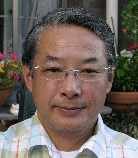13:30 - 16:00, International Conference Hall
Plenary Session 5
Compensation for Damages due to Asbestos
Chairs: Akira Morita and Satomi_Usijima
 |
Sugio Furuya
Ban Asbestos Network Japan (BANJAN) and Japan Occupational Safety and Health Resource Center (JOSHRC), Japan
ABSTRACT
Each country has own compensation scheme different from other countries reflected its historical, social and other backgrounds. The author is thinking that it may be an indicator to measure the level of sense of human rights of the country. Also to actualize the justice for asbestos victims and their families will be a common subject for all of us.
There have been very rare asbestos litigation cases in Japan. Almost of all compensated cases are employees' cases and awarded only benefits from the Workers' Accident Compensation Insurance scheme, which is administered by the Government.
Japanese official schedule of occupational diseases include asbestosis (as atype of pneumoconiosis), asbestos-related lung cancer and mesothelioma.Recently benign asbestos pleural effusion and diffuse pleural thickening also became compensable diseases on case by case basis. Asbestos-related disease victims can receive medical (100%) and absence (80% of the average wage, if he/she cannot to work) benefits until he/she will die (or the disease will be cured) without any time limitation. After the victims died dependent survivors will become able to receive survivors benefit as a pension. Even if a worker suffers from an asbestos-related disease after separation or retirement from the job in which he/she had been exposed to asbestos, he/she can receive compensation benefits. And even if, an employer hasn't paid insurance premium, a worker can receive compensation benefits. However it is estimated that the rate of compensated cases to all eligible cases remains at the level of only a few percent in every year, in Japan.
Under-reporting, under-compensation and under-diagnosis will be a common problem for all countries. In addition, in many developing countries, a victim and his/her family cannot receive workers compensation after his/her separation or retirement from the asbestos-exposed job, despite of an asbestos-related cancer often appear at that time. This will be one of reasons to make the real figure of asbestos-related cancers invisible in those countries.
The author will try to show an initial comparison of workers compensation for asbestos victims and their families in some countries for the future studies.